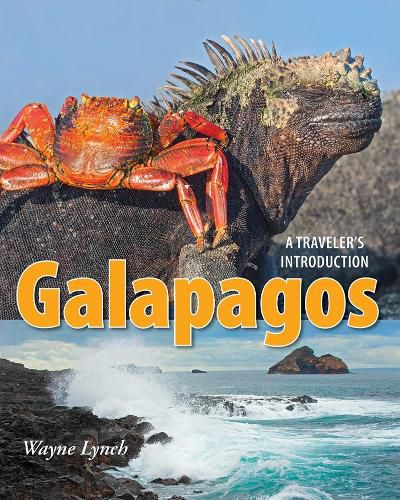Readings Newsletter
Become a Readings Member to make your shopping experience even easier.
Sign in or sign up for free!
You’re not far away from qualifying for FREE standard shipping within Australia
You’ve qualified for FREE standard shipping within Australia
The cart is loading…






In 1979, the Galapagos Islands was one of the earliest World Heritage Sites to be selected by UNESCO (United Nations Educational, Scientific and Cultural Organization), a designation intended to protect and preserve sites of cultural and natural heritage around the world. Today, there are over a thousand World Heritage Sites and the Galapagos Islands are one of the most widely valued. The biology of the Galapagos Islands has arguably been studied more than any other archipelago in the world. Charles Darwin visited the Galapagos Islands in 1835 and spent several decades studying the flora and fauna of the islands. His observations and collections contributed to the inception of Darwin’s theory of evolution by natural selection, one of the most important ideas in all of science. The new Republic of Ecuador took the islands from Spanish ownership in 1832, and subsequently gave them official Spanish names. The islands are located in the eastern Pacific Ocean, 605 miles (973 km) off the west coast of South America and consist of 18 main islands and 3 smaller islands. In this richly illustrated tour of the Galapagos, world renowned photographer and naturalist Wayne Lynch captures the unique wildlife living here, including the Galapagos tortoise, the marine iguana, the flightless cormorant, the blue-footed boobie and the magnificent frigatebird. AUTHOR: In 1979, at the age of 31, Dr. Wayne Lynch left a career in emergency medicine to work full-time as a science writer and photographer. Today, he is one of Canada’s best-known and most widely published professional wildlife photographers. He and his wife Aubrey live in Alberta, Canada.
$9.00 standard shipping within Australia
FREE standard shipping within Australia for orders over $100.00
Express & International shipping calculated at checkout
In 1979, the Galapagos Islands was one of the earliest World Heritage Sites to be selected by UNESCO (United Nations Educational, Scientific and Cultural Organization), a designation intended to protect and preserve sites of cultural and natural heritage around the world. Today, there are over a thousand World Heritage Sites and the Galapagos Islands are one of the most widely valued. The biology of the Galapagos Islands has arguably been studied more than any other archipelago in the world. Charles Darwin visited the Galapagos Islands in 1835 and spent several decades studying the flora and fauna of the islands. His observations and collections contributed to the inception of Darwin’s theory of evolution by natural selection, one of the most important ideas in all of science. The new Republic of Ecuador took the islands from Spanish ownership in 1832, and subsequently gave them official Spanish names. The islands are located in the eastern Pacific Ocean, 605 miles (973 km) off the west coast of South America and consist of 18 main islands and 3 smaller islands. In this richly illustrated tour of the Galapagos, world renowned photographer and naturalist Wayne Lynch captures the unique wildlife living here, including the Galapagos tortoise, the marine iguana, the flightless cormorant, the blue-footed boobie and the magnificent frigatebird. AUTHOR: In 1979, at the age of 31, Dr. Wayne Lynch left a career in emergency medicine to work full-time as a science writer and photographer. Today, he is one of Canada’s best-known and most widely published professional wildlife photographers. He and his wife Aubrey live in Alberta, Canada.